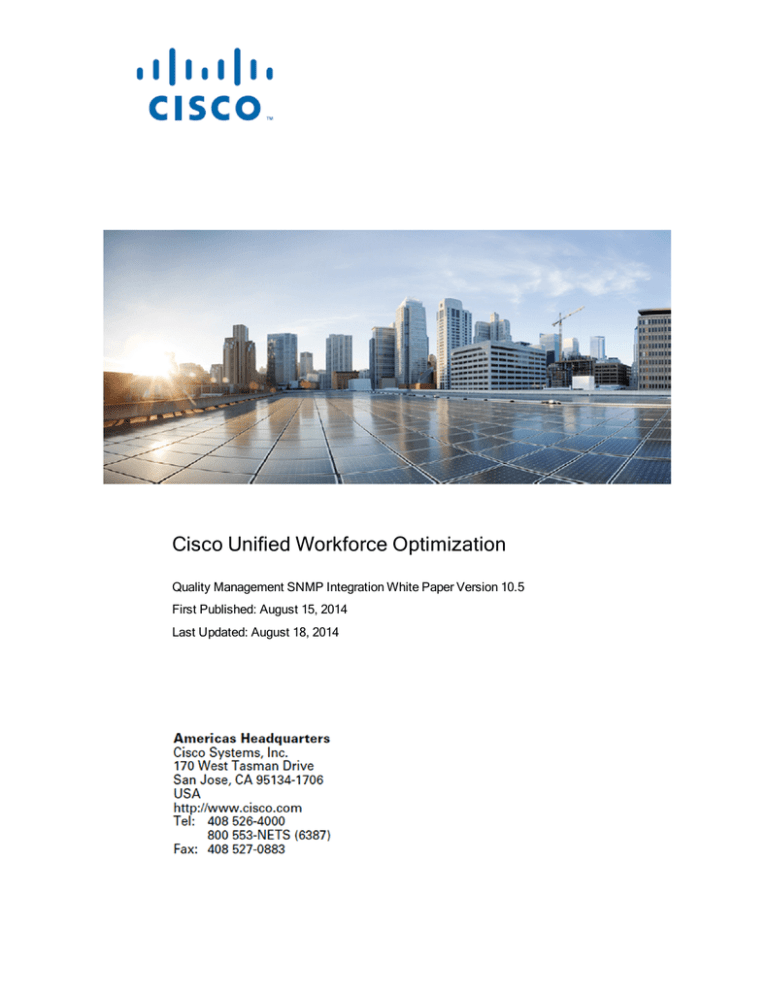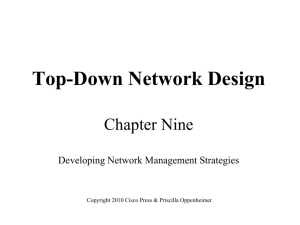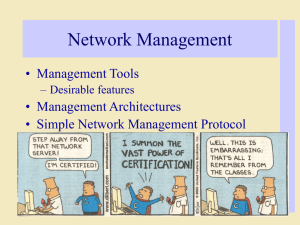
Cisco Unified Workforce Optimization
Quality Management SNMP Integration White Paper Version 10.5
First Published: August 15, 2014
Last Updated: August 18, 2014
THE SPECIFICATIONS AND INFORMATION REGARDING THE PRODUCTS IN THIS MANUAL ARE
SUBJECT TO CHANGE WITHOUT NOTICE. ALL STATEMENTS, INFORMATION, AND
RECOMMENDATIONS IN THIS MANUAL ARE BELIEVED TO BE ACCURATE BUT ARE PRESENTED
WITHOUT WARRANTY OF ANY KIND, EXPRESS OR IMPLIED. USERS MUST TAKE FULL
RESPONSIBILITY FOR THEIR APPLICATION OF ANY PRODUCTS.
THE SOFTWARE LICENSE AND LIMITED WARRANTY FOR THE ACCOMPANYING PRODUCT ARE SET
FORTH IN THE INFORMATION PACKET THAT SHIPPED WITH THE PRODUCT AND ARE INCORPORATED
HEREIN BY THIS REFERENCE. IF YOU ARE UNABLE TO LOCATE THE SOFTWARE LICENSE OR
LIMITED WARRANTY, CONTACT YOUR CISCO REPRESENTATIVE FOR A COPY.
The Cisco implementation of TCP header compression is an adaptation of a program developed by the
University of California, Berkeley (UCB) as part of UCB’s public domain version of the UNIX operating
system. All rights reserved. Copyright © 1981, Regents of the University of California.
NOTWITHSTANDING ANY OTHER WARRANTY HEREIN, ALL DOCUMENT FILES AND SOFTWARE OF
THESE SUPPLIERS ARE PROVIDED “AS IS” WITH ALL FAULTS. CISCO AND THE ABOVE-NAMED
SUPPLIERS DISCLAIM ALL WARRANTIES, EXPRESSED OR IMPLIED, INCLUDING, WITHOUT
LIMITATION, THOSE OF MERCHANTABILITY, FITNESS FOR A PARTICULAR PURPOSE AND
NONINFRINGEMENT OR ARISING FROM A COURSE OF DEALING, USAGE, OR TRADE PRACTICE.
IN NO EVENT SHALL CISCO OR ITS SUPPLIERS BE LIABLE FOR ANY INDIRECT, SPECIAL,
CONSEQUENTIAL, OR INCIDENTAL DAMAGES, INCLUDING, WITHOUT LIMITATION, LOST PROFITS OR
LOSS OR DAMAGE TO DATA ARISING OUT OF THE USE OR INABILITY TO USE THIS MANUAL, EVEN IF
CISCO OR ITS SUPPLIERS HAVE BEEN ADVISED OF THE POSSIBILITY OF SUCH DAMAGES.
Cisco and the Cisco logo are trademarks or registered trademarks of Cisco and/or its affiliates in the U.S. and
other countries. To view a list of Cisco trademarks, go to this URL: www.cisco.com/go/trademarks. Third-party
trademarks mentioned are the property of their respective owners. The use of the word partner does not imply
a partnership relationship between Cisco and any other company. (1110R)
Any Internet Protocol (IP) addresses and phone numbers used in this document are not intended to be actual
addresses and phone numbers. Any examples, command display output, network topology diagrams, and
other figures included in the document are shown for illustrative purposes only. Any use of actual IP
addresses or phone numbers in illustrative content is unintentional and coincidental.
Quality Management SNMP Integration White Paper
© 2014 Cisco Systems, Inc. All rights reserved.
Contents
Introduction
4
Definitions
4
SNMP Implementation
6
MIBs
6
Using MIBs
7
Generic Trap
7
Introduction
The following products include SNMP integration for their Monitoring and Notification (MANA)
service.
n
Cisco Quality Management 9.0, 10.0, or 10.5
MANA is responsible for sending notifications to administrators or supervisors when it detects
events that might negatively affect the functioning of the software or system.
This document covers SNMP integration and how to take advantage of this method of
notification when you install Cisco Quality Management.
Definitions
The following table defines terms used in this document.
Terms and definitions
Term
Definition
MIB
Management Information Base. A defined hierarchy of
data values managed by a single SNMP Agent
application.
OID
Object Identifier. A unique string of digits representing
a value defined in an MIB.
SNMP
Simple Network Management Protocol. A common
network protocol that describes messages passed
between SNMP-enabled applications.
SNMP Agent
An SNMP-enabled application that acts as a client to
an SNMP management application by providing data
values for registered OIDs.
SNMP GET
An SNMP message used to get a value for a particular
OID.
4
Introduction
5
SNMP
Management
Application
An SNMP-enabled application that can get or set
information from a local or remote SNMP Agent
application.
SNMP SET
An SNMP message used to set a value for a particular
OID.
Trap
An unsolicited SNMP message sent from an SNMP
agent to an SNMP management application.
SNMP Implementation
SNMP Implementation
The MANA service already has methods to alert administrators of potential problems
withCisco Quality Management. These products extend this functionality to SNMP so that
hardware/software management is provided for customers who already use SNMP
management software.
The MANA service provides unsolicited alerts when it detects problem events. The alert
contains the details of the problem, which enables action to be taken to prevent loss of software
functionality. The SNMP trap message contains the same information and can be sent out to
multiple SNMP management stations.
MIBs
Two MIBs are used to define the trap messages sent by the Cisco Quality Management
software:
l
The CALABRIO-SMI MIB contains definitions of frequently-used objects
l
The CALABRIO-GENERIC-TRAP MIB file defines the trap message format
Whereas most MIBs are very specific in their use and definitions, the Generic Trap MIB was
designed to define a generic message that can be sent by any Cisco application. The data
values contained in the trap are used to decode the trap’s contents.
For example, these OIDs are used to specify a particular Cisco product:
l
1.3.6.1.4.1.29988.1.1.1—used only for Cisco Quality Management
l
1.3.6.1.4.1.29988.1.1.2—used only for Cisco Agent Desktop
l
1.3.6.1.4.1.29988.1.1.3—used only for Cisco Workforce Management
Rather than use these very specific OIDs, the Generic Trap MIB uses this single OID:
l
1.3.6.1.4.1.29988.1.2—uses a variable that maps to the appropriate product name
6
SNMP Implementation
Using MIBs
The Installation Guide and Administrator User Guide for Cisco Quality Management explain
how to install the product software and configure it to enable the sending of SNMP traps. Once
configured, MANA will send the SNMP trap messages to all the IP addresses configured.
These IP addresses represent machines that are running some type of SNMP management
software.
The MIB files are used in order for the management software to display the information from a
Cisco generic trap in a readable format, or to allow decision code running on the management
station to interpret these traps.
The two Cisco MIBs describe the layout of information found in the Cisco trap in a language
that SNMP management stations understand. The MIB files need to be placed on a drive
accessible to the SNMP management software. Once there, the administrator configures the
management station to load the MIB files. How this is done varies, based on the SNMP
management station software provider.
The SNMP error codes are the same as the MANA error codes. These error codes are
documented in the Error Code Dictionary for version 8.6 or later.
Generic Trap
The trap message defined in the CALABRIO-GENERIC-TRAP MIB is a set of string and
numeric values that define the event. The OIDs, field names, and field descriptions are shown
in the table below.
Elements of a trap message
7
OID
Field
Description
1.3.6.1.4.1.29988.1.1
cigtTimestamp
Numeric. The date and time the
event was generated. Number
of seconds since 1/1/1970.
1.3.6.1.4.1.29988.1.2
cigtProduct
String. The name of the product
sending the trap.
SNMP Implementation
1.3.6.1.4.1.29988.1.3
cigtVersion
String. The version of Cisco
Quality Management that is
installed.
1.3.6.1.4.1.29988.1.4
cigtModule
String. The Cisco Quality
Management module reporting
the event. For Cisco Quality
Management, this is MANA. In
the future, other modules might
be used in addition to MANA.
1.3.6.1.4.1.29988.1.5
cigtSeverity
Numeric. The severity of the
event.
1 = Informational. Normal
processing messages.
2 = Warning. Abnormal
event that does not affect
product functionality.
3 = Error. Error that affects
some product functionality.
4 = Fatal. Serious error that
causes loss of basic
functionality.
1.3.6.1.4.1.29988.1.6
cigtEventCode
String. An alphanumeric error
code representing the event.
This code is used to look up
additional information and
troubleshooting information in
the Cisco Quality Management
documentation.
1.3.6.1.4.1.29988.1.7
cigtEventText
String. A readable string
describing the event.
8
Index
M
A
alerts 6
MANA 4
MANA error codes 7
C
CALABRIO-GENERIC-TRAP
MIB 6-7
MANA service 6
MIB 4
MIBs 6
CALABRIO-SMI MIB 6
O
cigtEventCode 8
OID 4
cigtEventText 8
OIDs 6
cigtModule 8
P
cigtProduct 7
problem events 6
cigtSeverity 8
S
cigtTimestamp 7
SNMP 4
cigtVersion 8
G
SNMP Agent 4
SNMP error codes 7
generic trap 7
SNMP GET 4
Generic Trap MIB 6
SNMP implementation 6
I
implementation 6
SNMP integration 4
SNMP Management Application 5
integration 4
10
Index: SNMP management stations – SNMP trap message
SNMP management stations 6
SNMP SET 5
SNMP trap message 6-7
11



